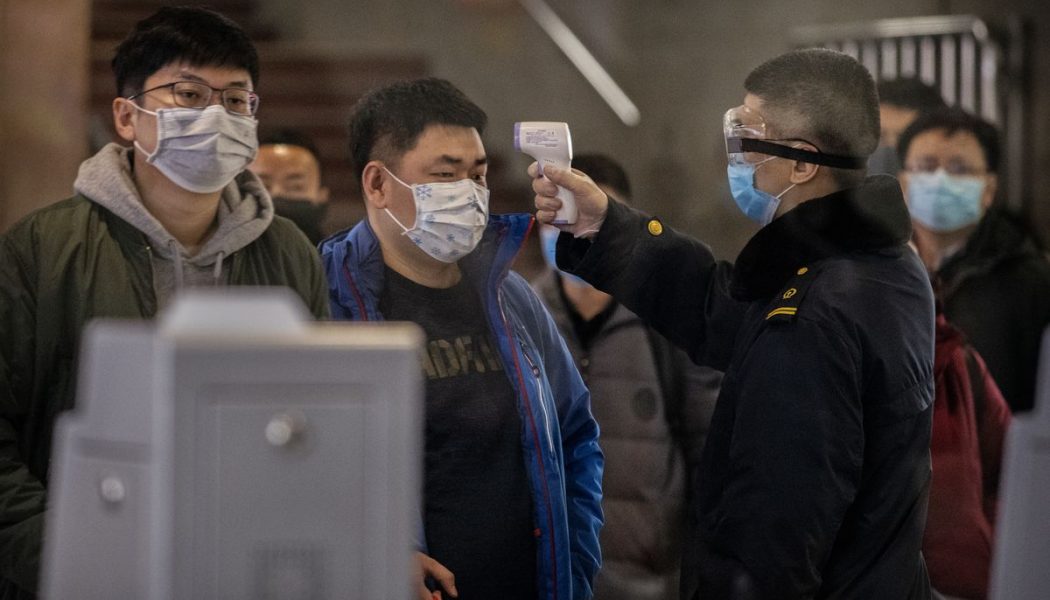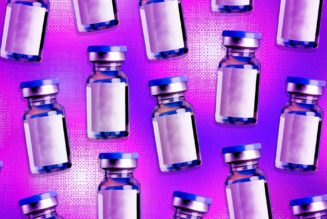Public health experts around the globe are scrambling to understand, track, and contain a new virus that appeared in Wuhan, China, at the beginning of December 2019. The World Health Organization (WHO) named the disease caused by the virus COVID-19, which references the type of virus and the year it emerged. The WHO declared that the virus is a pandemic.
The Verge is regularly updating this page with all of the latest news and analysis.
You can see where and how many cases of the illness have been reported in this map. There are large outbreaks of the disease in multiple places, including Brazil, India, the United Kingdom, and the United States, which currently has the worst outbreak of any country in the world.
As this important story continues to unfold, our hope is to answer all of your questions as people work to understand this virus and contain its spread.
Table of contents
Where did the virus come from?
At the end of December, public health officials from China informed the World Health Organization that they had a problem: an unknown, new virus was causing pneumonia-like illness in the city of Wuhan. They quickly determined that it was a coronavirus and that it was rapidly spreading through and outside of Wuhan.
:no_upscale()/cdn.vox-cdn.com/uploads/chorus_asset/file/19623790/1195417064.jpg.jpg)
Coronaviruses are common in animals of all kinds, and they sometimes can evolve into forms that can infect humans. Since the start of the century, two other coronaviruses have jumped to humans, causing the SARS outbreak in 2002 and the MERS outbreak in 2012.
Scientists think this new virus first became capable of jumping to humans at the beginning of December. It originally seemed like the virus first infected people at a seafood market in Wuhan and spread from there. But one analysis of early cases of the illness, published on January 24th, found that the first patient to get sick did not have any contact with the market. Experts are still trying to trace the outbreak back to its source.
The type of animal the virus originated from is not clear, although one analysis found that the genetic sequence of the new virus is 96 percent identical to one coronavirus found in bats. Both SARS and MERS originated in bats.
Where is it spreading?
The virus is now spreading all over the world.
Although it originated in China, the country took aggressive action at the start of the outbreak, shutting down transportation in some cities and suspending public gatherings. Officials isolated sick people and aggressively tracked their contacts, and had a dedicated network of hospitals to test for the virus.
Countries like New Zealand, Japan, South Korea, and Germany have successfully slowed the pandemic. The US has not, and it is now the epicenter of the crisis. It has more cases than any country in the world, and outbreaks are accelerating through the south and west — particularly in Florida and Arizona.
How dangerous is this new virus?
It takes information about both how severe an illness is and how easily it can spread to determine how “bad” it can be. Epidemiologists often use this tool to assess new strains of the flu, for example:
:no_upscale()/cdn.vox-cdn.com/uploads/chorus_asset/file/19623343/12_0124_F2.jpg)
If an illness isn’t very severe (and kills only a small percentage of people), but it’s highly transmissible, it can still be devastating. An easily transmitted illness that kills a small percentage of the people it infects can still cause a lot of deaths, precisely because so many people get sick.
The WHO named the illness caused by the coronavirus COVID-19 — “co” and “vi” for coronavirus, “d” for disease, and “19” for the year when the disease emerged.
COVID-19 is a serious illness, and it’s much more dangerous than the flu. One Centers for Disease Control and Prevention (CDC) projection suggests that between 160 to 214 million people will eventually be infected in the US and that between 200,000 and 1.7 million could die.
The symptoms of COVID-19 have ranged from mild, like those in a cold, to severe. Around 80 percent of confirmed cases are mild and don’t require hospitalization — at least, 80 percent of the cases that we know about. It’s still possible that there are more mild cases of the illness that haven’t been flagged, which would shrink the percentage of cases that are severe. In about 15 percent of people, the illness is severe enough that they need to be hospitalized, and about 5 percent of cases are critical. It appears around half of the people with critical cases of the illness die from it.
“Mild” cases, though, can still be debilitating. Some people with the disease say they couldn’t get out of bed for weeks. For many people, the effects of the illness linger: some people report running fevers for months or experiencing waves of fatigue that make it hard to run errands or walk up the stairs. Researchers don’t know why symptoms last so long, even after people no longer test positive for the virus.
So far, experts say that around 1 percent of people who get sick with COVID-19 will die, though it’s still too early to say for sure how often it is fatal. In the US, around 5 percent of people with confirmed cases of the virus have died from it, but that doesn’t account for the people who didn’t know they were infected or who weren’t able to get tested.
Different groups of people are more at risk of having a severe case of the illness or of dying from it. Most deaths in this outbreak have been in older people and those who have underlying health issues, like heart disease, hypertension, and diabetes. In that group, people are more at risk of dying. Around 14 percent of people over the age of 80 who get sick will die, for example.
How easily can the virus spread?
The virus moves rapidly. The new coronavirus spreads quickly in contained environments, like on the Diamond Princess cruise ship.
Early evidence suggested that, like other coronaviruses, the virus jumps between people who are in very close contact with each other. It also probably spreads when an infected person sneezes or coughs. Coughs and sneezes produce little droplets of mucus and saliva. If these droplets make it into another person’s eyes, mouth, or nose, they can get sick. The viruses in those little droplets can also fall onto surfaces, like tables or doorknobs — if someone touches that surface and touches their eyes, mouth, or nose, they can also get sick.
The smallest of those droplets can also linger in the air after a sick person coughs or sneezes or when they breathe and talk. People can probably get infected by those clouds of lingering droplets, even though scientists still don’t know how often that actually happens. That’s why being inside, particularly in poorly ventilated rooms, is dangerous: tiny virus-carrying droplets wouldn’t circulate out in the same way they would outdoors.
We also don’t know when people with COVID-19 become contagious or how long being contagious lasts. One study of nine people in Germany with mild cases of the illness found that they had high levels of the virus in their throats early on in the course of the disease before they felt very sick. Research out of China showed that people without symptoms still have high levels of the virus in their throats and noses.
It’s probably possible for people to spread the virus to others before they feel sick. It’s also possible that people who never feel sick and are truly asymptomatic can infect other people. Researchers still don’t know how often those people actually end up spreading the disease. Some studies suggest that people who do have symptoms are much more likely to spread the virus to others.
Each sick person will go on to infect, on average, between 1.4 and 2.5 additional people, the WHO says, though that’s an early estimate. Other teams of researchers have published their own estimates, with most saying a sick person will infect an average of around two or three people.
Those numbers are called the virus’s R0 (pronounced “R-naught”). The R0 is the mathematical representation of how well an infection might be able to spread. The higher the number, the easier the disease is to spread. For comparison, the R0 for SARS was between two and five. But that doesn’t mean each sick person will actually infect that many people; quarantines and other actions taken to control outbreaks of a virus can bring down the number of people a sick person infects.
The R0 is also just an average. Researchers think this particular illness happens in clusters and tends to cause “superspreading” events. Some estimate that as few as 10 percent of COVID-19 cases are responsible for 80 percent of the disease’s spread — that is, most people don’t infect anyone else, and a few people set off chain reactions that infect dozens.
Can we treat this virus?
There aren’t any proven treatments for COVID-19, but there are dozens of studies underway to find some. One leading candidate is remdesivir, an antiviral medication originally developed to treat Ebola. The Food and Drug Administration authorized it for emergency use during the pandemic — it doesn’t have full approval, but the agency says the potential benefits outweigh the risks.
There was a lot of early hype around the anti-malaria medication chloroquine, but clinical trials showed that it doesn’t actually help COVID-19 patients. Clinical trials did show, though, that a cheap steroid called dexamethasone could help people who are hospitalized with very severe cases of the disease.
Research teams and pharmaceutical companies are also working to develop a vaccine that can protect people from infection. However, vaccine development takes a long time. Even if everything goes smoothly, it will be around a year to 18 months before one is available, said Anthony Fauci, the director of the National Institute of Allergy and Infectious Diseases.
What can I do to protect myself and others?
Stay home if you’re feeling sick, even if you’re just a little bit under the weather. Stay home as much as possible even if you’re not feeling sick. If you do go out, wear a cloth mask or face covering when you’re out in public, especially in places where it’s hard to stay far away from others. While they’re not perfect, a cloth face covering could help stop you from spreading virus-laden particles to other people, even if you don’t know you’re sick. They could also partially block the virus from reaching your nose or mouth. If everyone wears them, some studies show they could help slow the spread of the virus.
Many states are slowly starting to let restaurants, barbershops, and retail stores open, even though the disease is still spreading rapidly in some places. The CDC released guidelines on June 12th, outlining the relative risk of everyday activities and the ways people should protect themselves when they venture out to the bank or the gym.
Spending time with a few people is less risky than hanging out with a large group, and everyone should wear masks and keep at a distance, the CDC says. The risk of contracting COVID-19 (or spreading it) goes up if you spend time with other people indoors rather than outside.
Before deciding if you should do a particular activity, the agency recommends thinking about how many new cases are being reported each day in your area. If the case numbers are low, the risk is lower than if hundreds of new people are being diagnosed with COVID-19 each day. You should also think about how closely you’d be interacting with other people (and if they’d be wearing a mask).
If you’re a young, healthy person, you might not feel very sick if you catch COVID-19. But you could pass it on to someone older or with a chronic health condition who is more likely to have a severe case of the disease.
:no_upscale()/cdn.vox-cdn.com/uploads/chorus_asset/file/19799162/EScDES4XYAEEU_7__1_.jpeg)
If I already had COVID-19, am I immune?
Many researchers think that after someone is infected with the coronavirus, there’s a good chance that person won’t get sick from the virus again for some still-undetermined amount of time. That’s based on what scientists know about how most viruses work. Usually, when you’re sick from a viral infection, your body develops antibodies against that virus. The next time you’re exposed to the virus, those antibodies could stop it from turning into a raging illness — though that isn’t always the case.
There isn’t concrete evidence that people who got sick once with COVID-19 can’t get sick again because no studies have specifically tested that idea. But virologists don’t think that this virus behaves differently than most other viruses — so people who did get sick are probably protected. The question, though, is for how long: for some viruses, the protection fades after a year or a few years. There aren’t answers to that question yet.
Some doctors in China and South Korea have reported that some patients who were sick with COVID-19 and recovered tested positive for the virus a second time. That probably doesn’t mean they were re-infected, though, and doesn’t mean that people can get sick more than once in a short period of time. Instead, it probably means that there were still tiny bits of virus lingering in their nose and throat — not enough to make them sick, and probably not enough to make other people sick, but enough to trigger a positive test. It could also mean that the patients’ initial, negative tests after they felt better were false negatives, which happen frequently.
What’s happening in the US?
US Secretary of Health and Human Services Alex Azar declared a public health emergency in response to the coronavirus at the end of January, and President Trump declared a federal emergency in March.
As the overall case counts rose through March and April, governors and local officials closed nonessential businesses and told people to work from home and stay away from others. The interventions are helped to slow the spread of the disease in some areas, but many states — including Texas, Arizona, and Florida — lifted restrictions before public health experts thought it was safe.
Now, cases in those places are rapidly increasing. After a long plateau, spikes in some Southern and Western US states are pushing new daily case numbers in the US to record highs.
Early in 2020, the virus spread undetected for weeks in the US. Initially, CDC guidelines did not allow testing unless a sick person had been in a country with an ongoing spread of the virus or who had been in contact with someone with a confirmed case of the disease could be tested. That delayed the diagnosis of patients who did not have those risk factors.
The US is doing around 480,000 to 500,000 COVID-19 tests per day, according to data collected by volunteers at the COVID Tracking Project. Some experts say the US needs to be doing at least 900,000 tests per day. Testing was slow to get off the ground in the US. It took too long for the FDA and the CDC to develop and distribute a functioning test and longer still for testing capacity to increase.
Many public health agencies across the country also still aren’t getting in touch with everyone who tests positive for the virus to find the people they may have exposed — a critical public health tool called contact tracing. The US needs to scale up its contact tracing workforce in order to control the outbreak.
The US currently has the worst outbreak of any country in the world.










